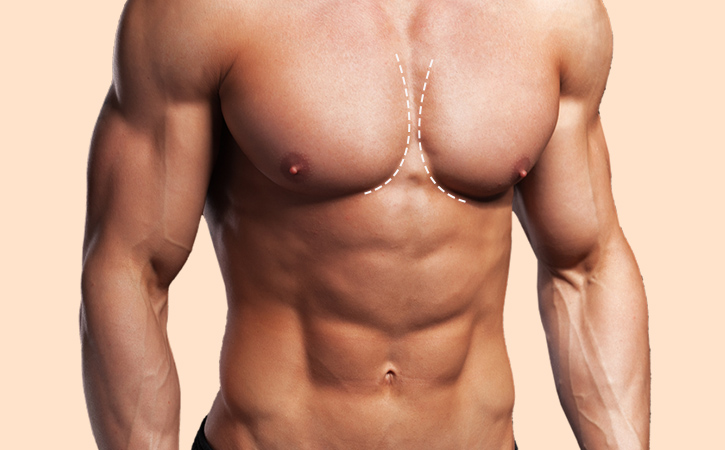Gynecomastia is a common medical condition that many adult males and boys face. In this condition, the breasts swell up and become large, just like female breasts. Even males have breast glands, but it is not that prominent.
Breast gland enlargement can occur in males of all ages, including newborns and puberty. Gynecomastia causes are not due to the accumulation of fat but due to additional breast tissue.
That is why exercising or losing weight does not help to reduce the breast tissue in gynecomastia. On the other hand, pseudo gynecomastia is a different condition in which fat builds up in the breasts. It is caused mainly because of excess weight gain.
Surgery for gynecomastia
Breast has firm and dense glandular tissue along with softer fatty tissue. The ratio of these two tissues varies from person to person. Those suffering from gynecomastia have excessive amounts of both types of tissue.
Liposuction is a surgical procedure that helps to remove excess fatty tissue. In this procedure, a small tube is inserted by making an incision. In excision, the tissue with a scalpel is used to remove excess glandular tissue. It leads to a scar around the edge of the nipple.
A larger incision and scar are required to remove much tissue and skin. Bruising and swelling of the chest are common after surgery. The patient must wear an elastic pressure garment to reduce the swelling.
After surgery, it will take some time to return to a normal routine. Any serious complications from surgery are rare when performed by an experienced surgeon. The complications can be insufficient breast tissue removal, uneven chest contour, and reduced sensation of one or both nipples.
Some treatments for gynecomastia
Gynecomastia can resolve on its own without the need for treatment of gynecomastia. It can take around six months to 2 to 3 years. But if the person also suffers from some underlying condition, gynecomastia treatment may be required.
If some medication is the root cause of gynecomastia, you must consult your doctor and switch to a different drug. If the medication is consumed only briefly, the condition will be temporary and not last long. Treatment is rare for gynecomastia but can involve breast reduction surgery or hormone therapy to block oestrogen.
Medications for some treatment of gynecomastia
Drugs that block the action of oestrogen, a female hormone, in the body can be used for gynecomastia treatment. These medications are also used for treating breast cancer. It is also used to reduce breast pain and breast enlargement in males.
Aromatase inhibitors are typically used for treating breast and ovarian cancer in postmenopausal females. Apart from that, they also help to prevent or be used for gynecomastia treatment. Testosterone replacement is also an option to treat gynecomastia in older males with low testosterone levels.
Gynecomastia causes
Various gynecomastia causes lead to the condition in males. Common gynecomastia causes an imbalance between the sex hormones testosterone and oestrogen. Oestrogen is a female sex hormone found in males but only in small quantities. It is responsible for breast tissue growth, whereas testosterone stops its function.
Both males and females have testosterone. However, males have higher levels of testosterone, and females have oestrogen. Even newborns and young boys can develop gynecomastia due to the fluctuation of hormones. However, their condition generally resolves on its own.
Swollen breasts are also common in older males. As males approach an older age, testosterone production decreases, and therefore, fat accumulation increases. This, in turn, leads to increased oestrogen.
Some men also develop gynecomastia due to the use of some herbal products or medications like:
- Anabolic steroids
- Antibiotics
- Ulcer medications
- Chemotherapy
- Tricyclic antidepressants
- Diazepam and other drugs for treating anxiety
- Some HIV medications
- Anti-androgens
- Some heart disease drugs
If you are taking any of these medications and experiencing gynecomastia, you should get yourself diagnosed by your physician. They can help you avail effective gyno treatment.
Gynecomastia and its signs and symptoms
Gynecomastia is generally not a severe medical condition. It gets resolved independently, except in the case of some underlying disease. Symptoms of gynecomastia are swelling and tenderness in one or both breast gland tissue.
The initial stage is the development of a lump or fatty tissue around the nipples. Generally, these lumps are uneven. If the swelling persists for longer and one experiences pain and nipple discharge, you should consult with a doctor at PVR Aesthetica for gyno treatment.


